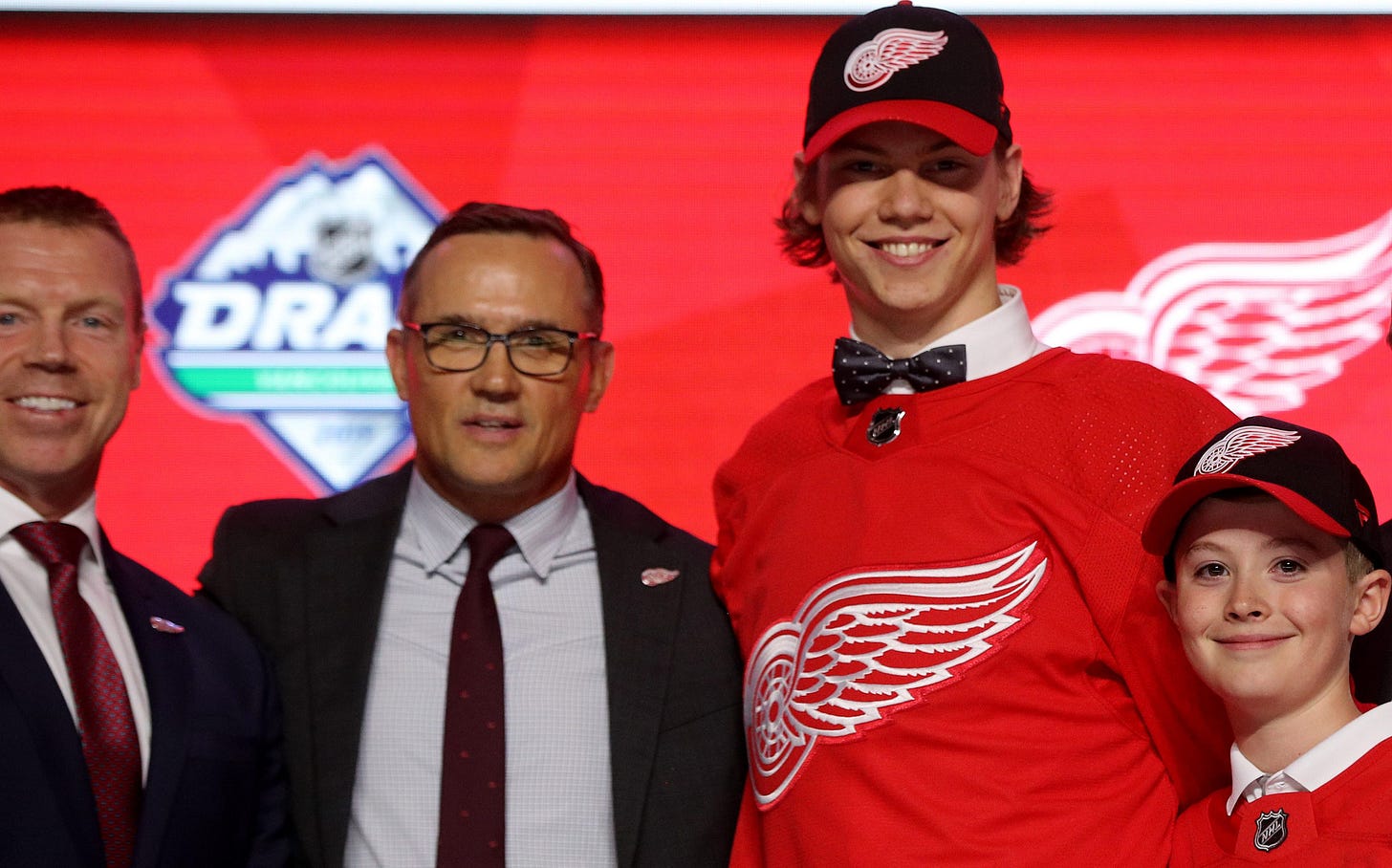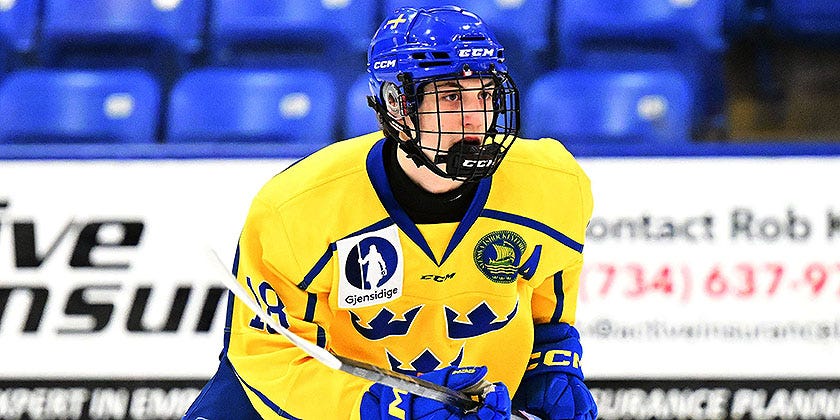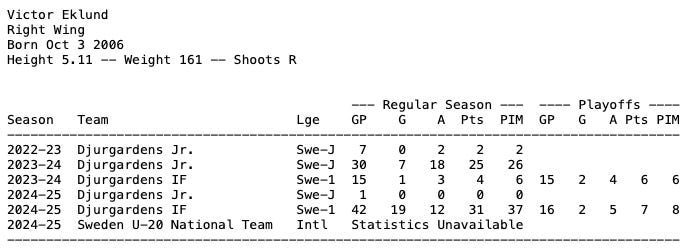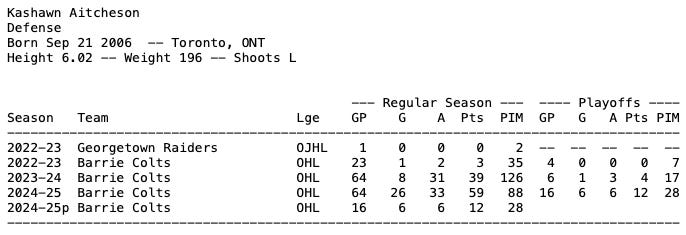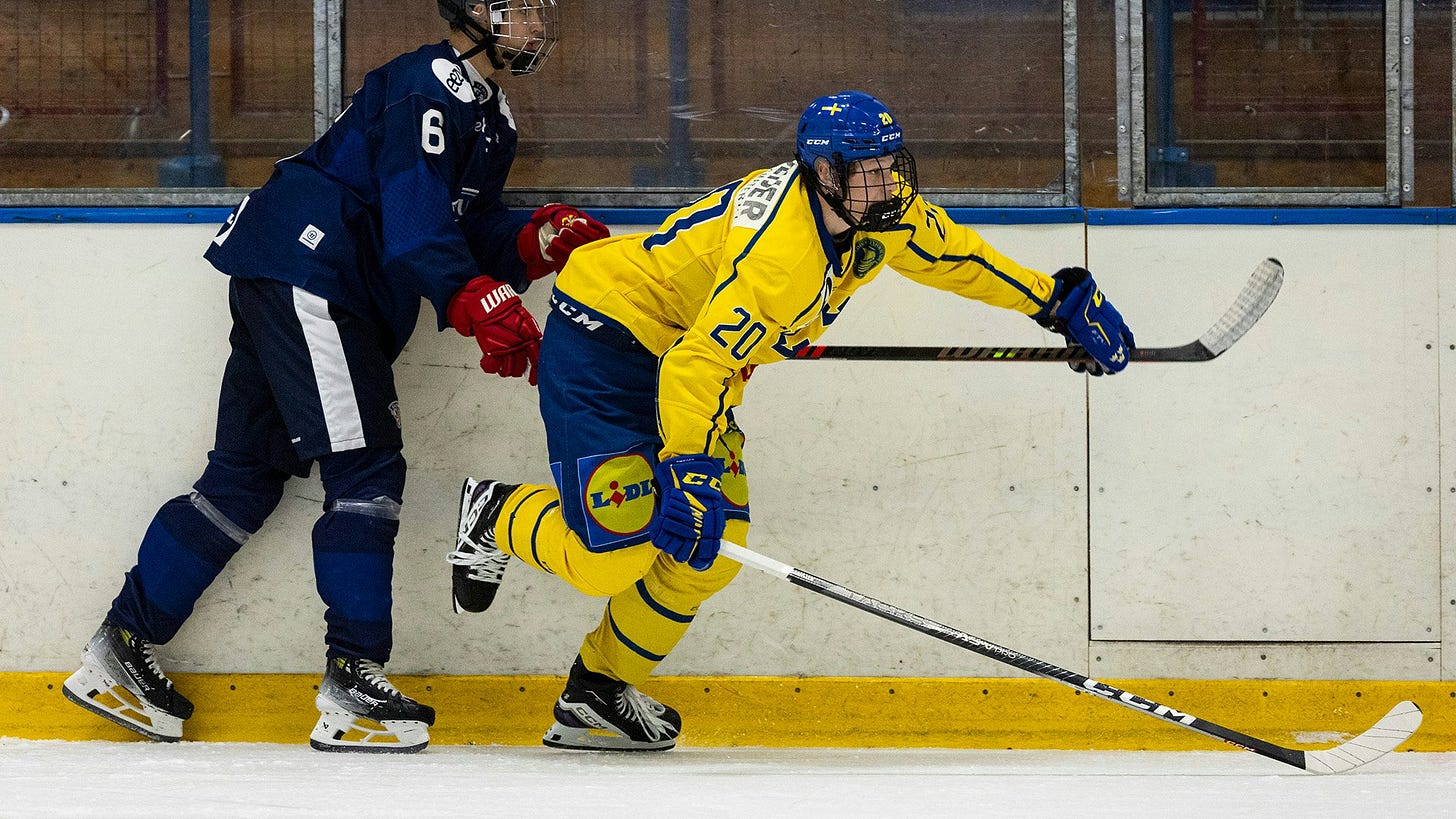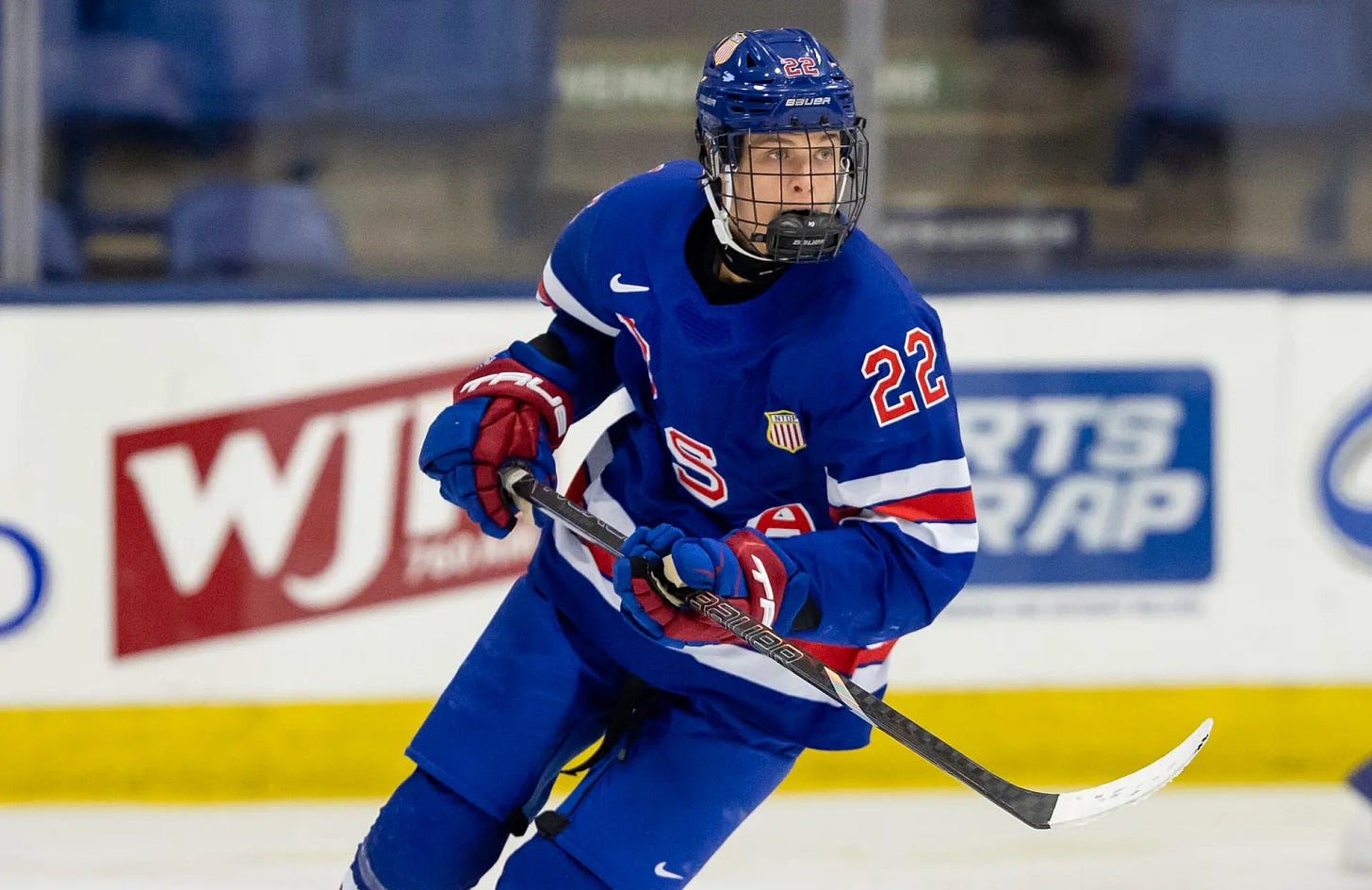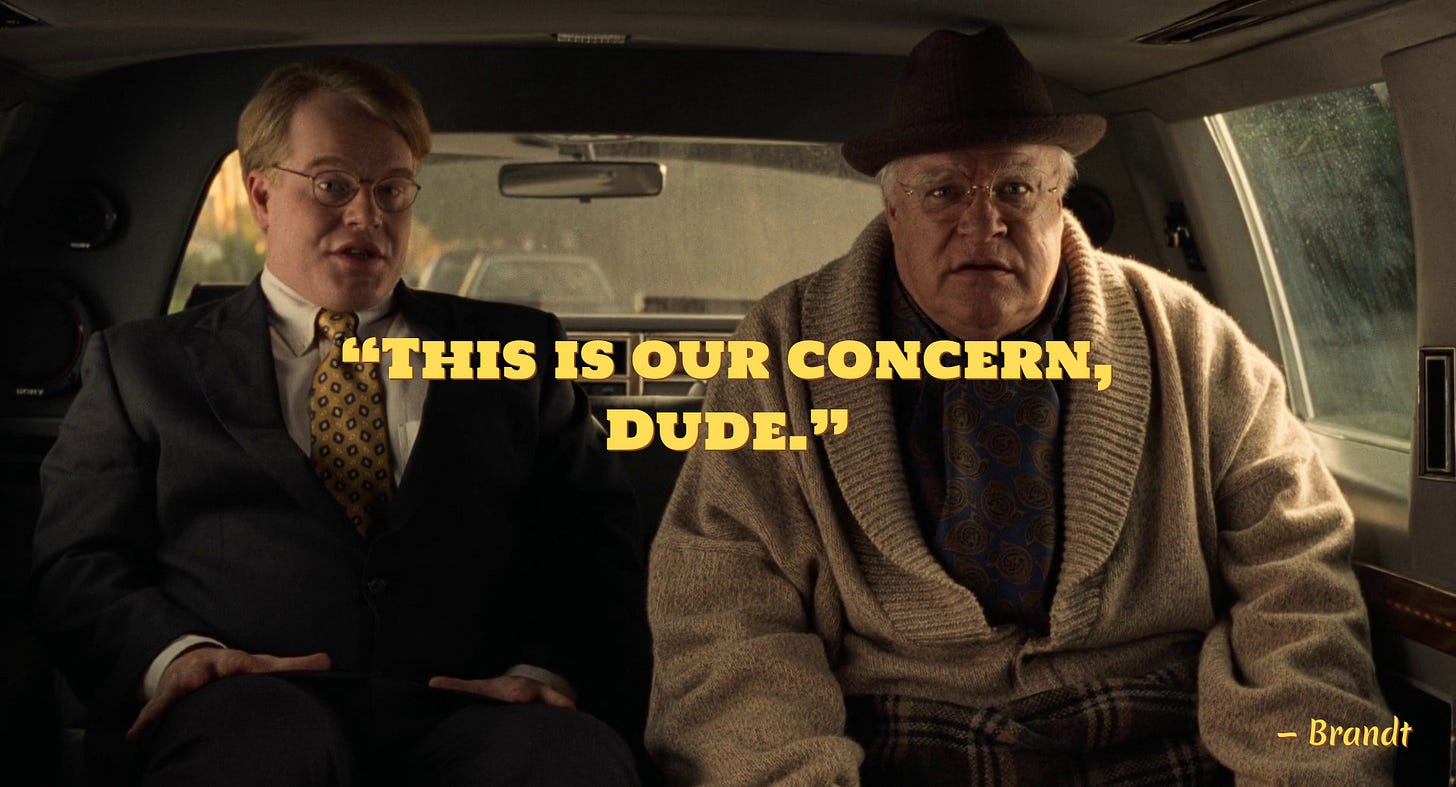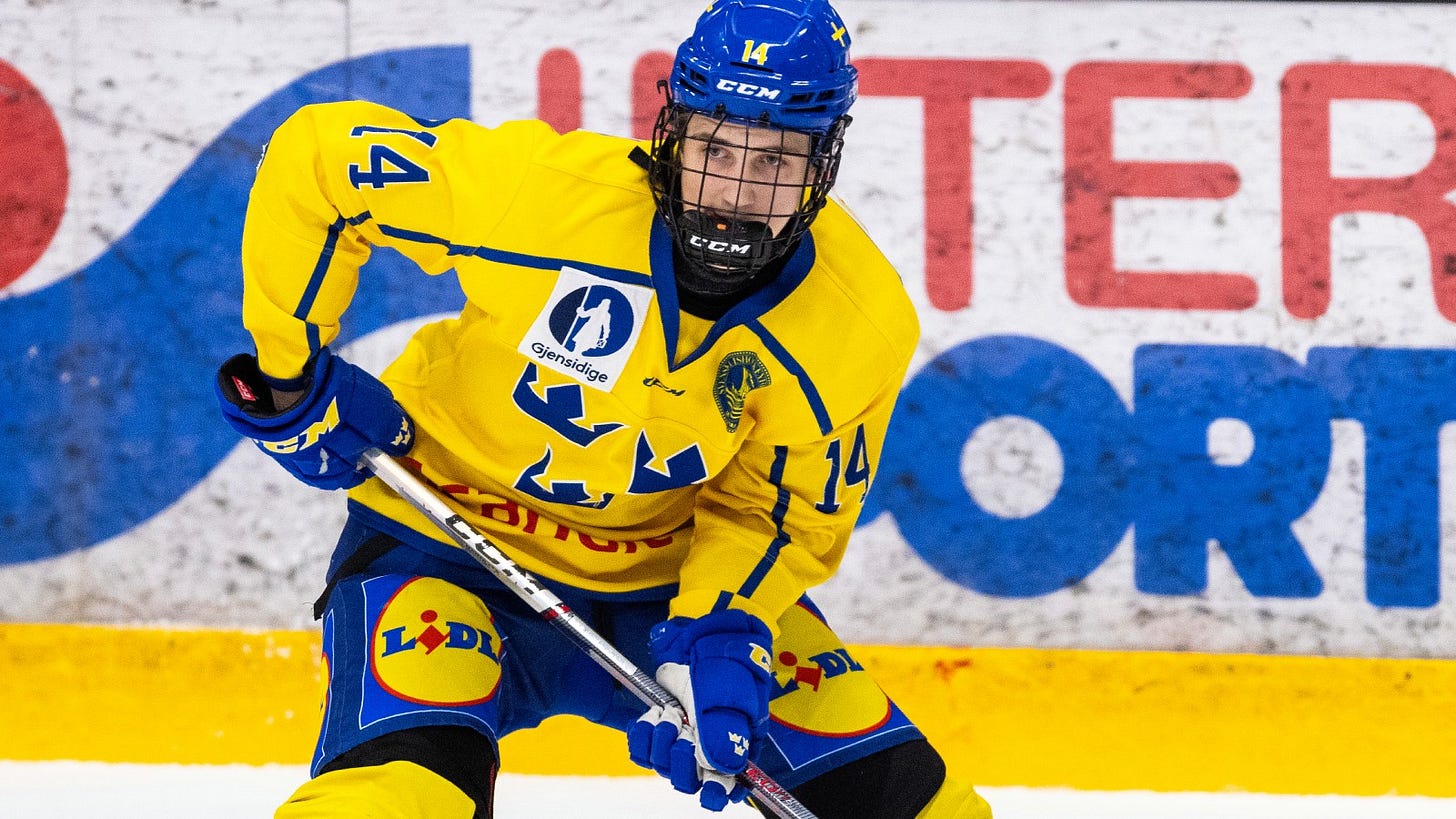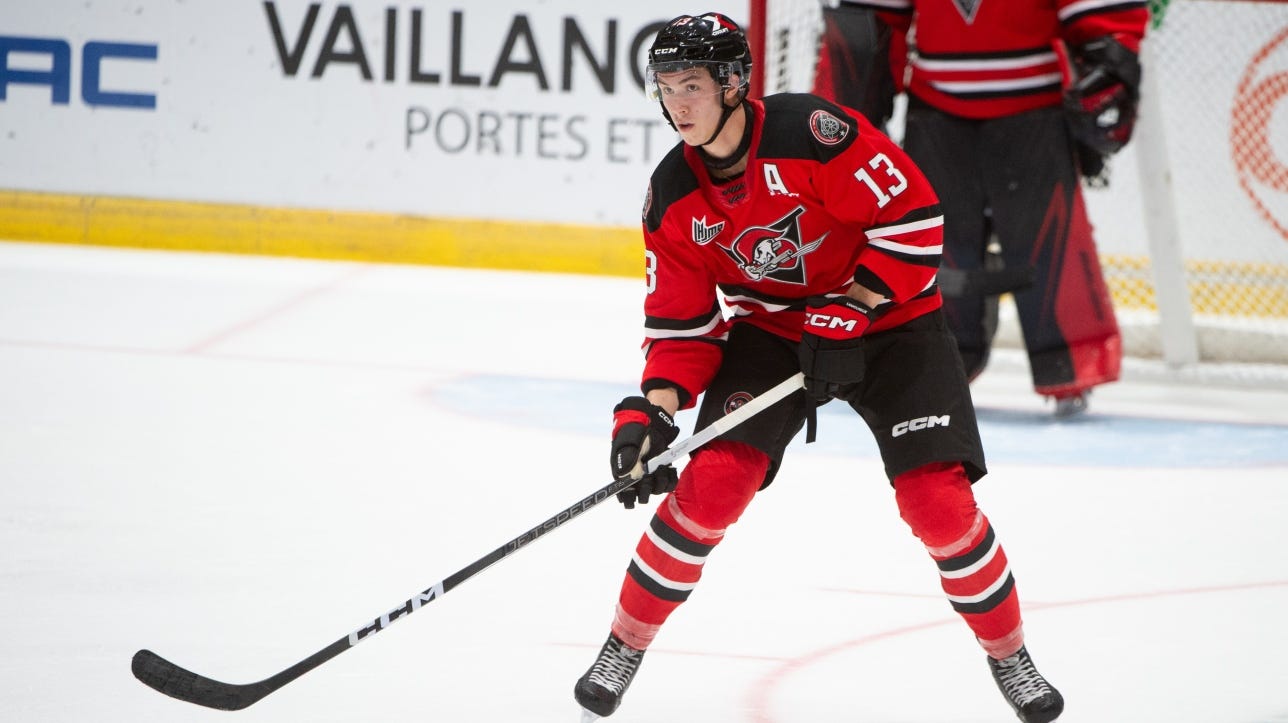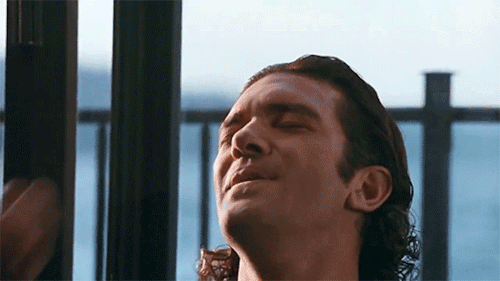Credit: NY Times
The NHL Draft has been a mixed blessing for the Red Wings. The tried and true way to build a championship caliber team is to pick near the top of the NHL Draft. All you have to do is look at the Stanley Cup Finalists from the past two years to see the impact the draft has had on both organizations: the Florida Panthers selected Sasha Barkov with the #2 overall pick in the 2013 draft and followed that up with Aaron Ekblad, the #1 overall pick in the 2014 draft; not to be outdone, the Edmonton Oilers selected Leon Draisaitl #3 overall in the 2014 draft and then drafted quite possibly the most skilled player of all time in Connor McDavid with the #1 overall pick in the 2015 draft.
In fact the Oilers selected first in the NHL draft so often - 4 times over a 6 year span - the league changed the rules for determining the draft order, but not in time to prevent Edmonton from claiming two of the league’s greatest centers in a sport where center is quite possibly the most important position on the ice.
Detroit, however, has not been so lucky. You would have to go all the way back to the 1990 draft to find the last time the Red Wings had a top 3 draft pick. Part of that is due to the fact the team had a 25 year streak of making the playoffs, but that new draft format that resulted from Edmonton’s string of #1 overall picks has done no favors to Detroit, as the Red Wings dropped a total of 9 draft spots during a point in time when the franchise was reliant on the draft for acquiring very good, very cheap players.
With that being said, Detroit has generally punched above their draft position, particularly when drafting out of Europe in the first round. While the Red Wings will never be gifted a Connor McDavid or a Sidney Crosby level talent, they have built out a strong core. Moritz Seider, Simon Edvinsson and Axel Sandin-Pellikka should develop into one of the better defensive groups in the NHL. The Red Wings look to have solid if not spectacular two-way depth at center with Dylan Lakin, Marco Kasper and Nate Danielson. They hope to have their goalie of the future with Sebsatian Cossa or Trey Augustine. So the franchise has built through the middle of the ice with their best draft capital, and time will tell how competitive this group will become.
Drafting the Best Player Available
When it comes to drafts, the general consensus is you should draft the ‘best player available’. The idea here is you rank all of the prospects eligible for the draft, making it easy to decide whom to select when it comes time to make your pick: you simply look at your list and choose the top player still available. While this makes perfect sense in theory, you will have widely differing opinions the further you move from the 1st overall pick.
However we do know based on past draft history that Detroit prioritizes certain traits. They like defensively sound players, typically prioritizing two-way play over guys who have offensive skill but questionable dedication to their own end of the ice. The Red Wings also like guys who have a strong motor, meaning they give it their all, shift after shift. Detroit’s brass also likes guys who have worn a letter, so it’s obvious they value young men who have taken on leadership positions. General manager Steve Yzerman also spoke during his end of season press conference about how much he values being ‘tough to play against’ code words for players who don’t shy away from physical play in front of the goal or along the boards.
So what I plan to do is highlight players who may be available when Detroit steps up to the podium to make their selection. This will be a combination of best player available based on prospect rankings and looking at players who have shown traits we know the Red Wings prioritize. The goal here isn’t so much to try to predict which prospects Detroit will pick, but rather to take a look at 16 prospects who may be a good fit based on what Detroit tends to prioritize.
First Round: 13th Overall Pick
Credit: Neutralzone.com
Victor Eklund (Winger, Djurgarden, SHL)
Draft stock: dropping
Ranking range: #4 to #11
Credit: Hockey DB
In the Athletic’s June 11 mock draft, their editors list Victor Eklund as Detroit’s draft pick. It’s questionable whether Eklund will fall to Detroit, as he’s generally been viewed as a top 10 prospect, but with center and defense being critical building blocks, and franchises rushing to follow the Florida Panthers blueprint for success, there’s a chance Eklund, who isn’t big and plays on the wing, could drop.
I view this as the best case scenario, as the Red Wings have had lots of success drafting out of Europe in general and Sweden in particular. Also, this is the sort of ‘draft luck’ Detroit tends to get, given they routinely get knocked down in the draft pecking order. If Eklund drops to Detroit, he will almost certainly be considered a top 10 talent when draftniks look back at this 2025 draft in future years.
Why Eklund? Fits Detroit’s blueprint, and the organization’s had lots of success drafting out of Europe.
Baseline projection: Eklund would fill a clear need for scoring depth, and he’d almost certainly be a scoring line contributor, with the potential to contribute on the PP and PK.
Kashawn Aitcheson (Left Defense, Barrie, CHL)
Draft stock: rising
Ranking range: #12 to #19
Credit: Hockey DB
With the Panthers looking like a new age Broad Street Bullies, Aitcheson is an easy choice to indicate you are going the copy + paste path towards punishing hockey. Aitcheson is a riser, going in a different direction from Victor Eklund, as his physical traits are likely to be prioritized to the point he’ll be gone by the time Detroit makes their pick.
I’m no scout, but I did review a few of Aitcheson’s games and I could see him being a fit for the Red Wings. While he wouldn’t be my preferred pick here, I could certainly understand why the Red Wings would select him with the 13th overall pick given their draft history out of North America and Yzerman’s goal of becoming tougher to play against. This seems to be an edict ever since Ottawa battered the team in back to back matchups late in the 2022-23 season which put an end to Detroit’s hopes for making the playoffs that year.
Why Aitcheson? Provides the physicality the league prioritizes, used heavily in juniors on the PK and to protect lead late in games.
Baseline projection: at a bare minimum, he’s a bottom pairing d-man who can PK.
Carter Bear (Wing, Everett, CHL)
Draft stock: flat
Ranking range: #7 to #21
Credit: Hockey DB
The achilles injury Bear suffered earlier this year may have played a role, but his draft position hasn’t changed much as other prospects have moved up and down the mock drafts. The Silvertips forward is a gritty prospect, but one who makes his living in front of the opposing team’s net. I did a write up on Bear and one of my takeaways is I don’t see him as a strong two-way player, which is something that may prevent the Red Wings from drafting him.
If Detroit selects Bear, it suggests they feel pretty good about the number of two-way players on their roster and they are willing to prioritize a strong net-front presence the likes of which they last had when Tomas Holmström rode shotgun to Pavel Datsyuk and Hank Zetterberg.
Why Bear? Fits stated goal of becoming tougher to play against based on advanced checking and play in front of opposing net.
Baseline projection: Bear would hopefully develop into a middle 6 winger who would feature on the power play.
Jackson Smith (Left Defense, Portland, CHL)
Draft stock: falling
Ranking Range: #6 to #15
Credit: Hockey DB
Detroit likes to keep things safe and sound with their top draft pick, which is why I have Victor Eklund at #1 and Kashawn Aitcheson at #2. With Jackson Smith, you are taking a swing at upside, with the downside being questions on Smith’s hockey sense. Detroit has the makings of a very strong top 4 through their first 6 drafts under Yzerman, so if Smith is the BPA on their draft board, they may decide to take some risk here. At 13, you start to weigh the upside a bit more than you would if you were drafting in the top 10, which is where Smith has been ranked until recently as he appears to slide down several mock drafts.
There are quite a few scouting services that rank Smith as the 13th best prospect, so there is a case to be made that the value proposition starts to flip in Smith’s favor with Detroit’s pick. But again, we’re talking about a franchise that eschews risk with their top draft pick.
The NHL tends to prioritize size above all else, so adding a 6’3” defenseman who can skate and has plus stick handling and passing tools would fit the general preference for big d-men. I suspect Smith’s a bit too risky for Detroit here, so I don’t expect him to be the choice, but with comparisons to Phillip Broberg (8th overall in 2019) and Travis Sanheim (17th overall in 2014) he may make sense around the 13th overall pick should he still be on the draft board.
Why Smith? Big, mobile defenseman who could round out a dominant defense if he fulfills his potential.
Baseline projection: a reasonable expected outcome for Smith would be a bottom 4 defenseman.
Cole Reschny (Center, Victoria, CHL)
Draft stock: rising
Ranking range: #14 to #32
Credit: Hockey DB
Reschny is a late riser, mostly written off until the final weeks before the draft as a late first round draft pick. The main reason for his poor ranking has been what is typically viewed as a fatal combination of poor size and decent but not blazing skating speed. However his actual production has been stellar, and when you add in the fact he just turned 18 in April, he’s starting to be viewed as the exception to the rule.
When Detroit has taken a flier on a small, skilled forward it’s usually been in the second round and beyond (Max Plante, Amadeus Lombardi), so Reschny doesn’t fit the scouting staff’s preferences when it comes to first round picks. Like Jackson Smith, however, this may be a draft where the franchise is willing to take a bit of risk with the hope Reschny could become a poor man’s Brayden Point (79th overall in 2014).
Why Reschny? An organization that lacks high end skill in its prospect pool may finally decide to address this shortcoming, as Reschny will almost certainly be available here.
Baseline projection: a safe prediction for Reschny would be third line scoring depth and contributor on the power play.
Second Round: 44th Overall Pick
Credit: lhc.eu
Eddie Genborg (Wing, Linköping, J20 Sweden)
Ranking range: 30s to 50s
Credit: Hockey DB
Corey Pronman mocked Genborg to Detroit with this pick and given the fact the Red Wings selected Michael Brandsegg-Nygård last season you can certainly understand this choice given Genborg’s similarities to MBN. Genborg has NHL size, excels at using it, and, like Carter Bear, has an appealing net front presence.
Genborg played 20 SHL games, more than any other draft eligible Swede, so he’s already begun plying his trade against men as an 18 year old. This feels like a Red Wings pick that once again provides the best of both worlds as Genborg would be scouted by the Euro staff and has elements sure to please the North American scouts.
Why Genborg? Detroit prioritizes size and guys who are comfortable when open ice evaporates.
Baseline projection: Bottom six forward with a chance to contribute on the power play.
Theo Stockselius (Wing, Djurgärdens IF, J20 Sweden)
Ranking range: 30s to 70s
Credit: Hockey DB
Theo Stockselius is ranked right around where the Red Wings are expected to pick, so given the fact Detroit has had a lot of success drafting out of Europe, Stockselius may be a prospect to keep an eye on here.
Stockselius has great size at 6’3” and was fourth in U18 scoring in the J20 league in Sweden. He also won’t turn 18 until July, so there should be plenty of development runway left. He also embraces physical play, so he’s not a guy who refrains from using his size as has been the case with taller players like Anthony Mantha and Michael Rasmussen.
Why Stockselius? Fits Detroit’s preferences based on the forwards they have drafted in the past. Safe pick as the odds are good of turning into an NHL’er.
Baseline projection: if Stockselius’ development goes well, he’s likely a bottom 6 forward.
Credit: Daily Faceoff
William Horcoff (Forward, Michigan, NCAA)
Ranking range: 30s to 50s
Credit: Hockey DB
The Red Wings have plenty of familiarity with Horcoff, as his father runs the Grand Rapids Griffins. Horcoff may be off the board by the time Detroit makes this pick, as he’s ranked anywhere from the mid 30s to the 50s. While he hasn’t generated sufficient offensive production up to this point of his development to suggest NHL scoring line skill, he has elite NHL size at over 6’4” tall. Horcoff dominated the NHL scouting combine skills tests, setting a record for the horizontal jump during the testing. He’s got everything you could possibly want outside of the on-ice production.
Horcoff should get plenty of developmental opportunities at what looks to be a loaded Michigan program. It’s reasonable to wonder how much juice is left from a developmental standpoint for a prospect who’s likely had access to high level training from a young age, but with the recent development of Tage Thompson as a dominant power forward, I suspect some team is going to take a flier on Horcoff before this pick.
Why Horcoff? Detroit has more insight into him than any other franchise, so if they think there’s scoring potential, this could be a second round pick that turns into a high quality NHL’er. If not, the organization still prioritizes everything Will has shown up to this point in his career.
Projection: Middle six forward. Unclear at this point whether he’d play a role on an NHL specialty teams unit.
Peyton Kettles (Defense, Swift Current, CHL)
Ranking range: 40s to 70s
Credit: Hockey DB
Reaching for a big defender in the second round is a hallmark of Detroit’s North American scouts. Former director of scouting Tyler Wright was a big fan of 6’5” Antti Tuomisto back in 2019. Since then the Red Wings have drafted 6’4” Andrew Gibson and 6’5” Brady Cleveland in the second round. So the 6’5” Kettles is likely to be catnip to the Red Wings, and he’s almost certainly going to be available with the #44 overall pick, but - based on curent rankings - will likely be gone by the time they step up to make their third round picks.
Kettles displays solid shutdown capabilities and is a load during board battles. A young ‘un, Peyton will not turn 18 until September 1st, so there’s still plenty of development left for him. If anyone is going to reach for Kettles, it’s going to be the Detroit Red Wings.
Why Kettles? Big. Physical. And Big. Young. And Big.
Projection: bottom pairing or depth defenseman.
Matthew Gard (Center, Red Deer, CHL)
Ranking range: 40s to 70s
Credit: Hockey DB
If there is proof Kris Draper knows how to use AI enough to be dangerous, it would be the existence of Matthew Gard. A big, physical shut-down center, Gard has everything the Red Wings director of scouting seems to prioritize. While Gard uses his substantial size effectively, it does remain to be seen how eager he will be to engage once he moves up to the pro level?
Gard doesn’t have the offensive chops to project as anything beyond a 4th line center, which is a reasonable concern with a second round pick, but with players like Dylan Larkin, Marco Kasper and Nate Danielson ahead of him on the depth chart, 4th line duty would a) suit Gard perfectly and b) expedite his path to joining the big club.
Why Gard? Size and defense and effort for days. Kris Draper would clone him if he could. Wait, did the Red Wings take Gard out to dinner at the combine?
Projection: Fourth line center, PK’er.
Third Round: 75th & 76th Overall Picks
Credit: hockeysverige.se
Filip Ekberg (Winger, Ottawa, CHL)
Ranking range: 50s to 80s
Credit: Hockey DB
If not for an illness that resulted in a poor start to the season, Ekberg would likely be further up the prospect rankings. He also suffers from the mortal sin of being below 6 feet tall; so like Cole Reschny, his lack of size combined with not being an elite skater makes him persona non grata to the NHL for many pro scouts. But we’re talking third round, so Ekberg’s skill may prove enticing here.
A likely outcome is Ekberg develops into another Jonatan Berggren, a skilled guy who can provide scoring depth but struggles when moved up to a scoring line. Given the fact he threatened 2.0 PPG over his final 25 OHL games last season and had 18 points in 7 games for Sweden at the WJC U-18 tournament, there may be some further development in Ekberg’s game. With the 75th or 76th overall pick, this may be the place to take a flier on him with the hope that he’s a bit of a late bloomer who’s just starting to develop his offensive skill.
Why Ekberg? The third round and beyond is where Detroit has been willing to sacrifice on their preferred traits in search of high end skill.
Projection: third line scoring depth, potential power play contributor.
Kristian Epperson (Left Wing, Saginaw, CHL)
Ranking range: 40s to 70s
Credit: Hockey DB
Once you get beyond the first two rounds, you look for players with a standout skill. In the case of Epperson, it’s his hockey sense. Epperson is 19 years old, a re-entry candidate who went undrafted last year, but blossomed on #2 ranked prospect Michael Misa’s line this past year, putting up 80 points over 58 games.
Epperson likely will not be available by the time the Red Wings make their third round selections, as the vast majority of the rankings place him above the 75th ranked prospect. He also fits a trend for players who didn’t put up impressive stat lines with the USNTDP but went on to quickly grow their counting stats when moving on to new programs, which will likely boost his draft stock. The 1.38 points per game Epperson put up in Saginaw is going to draw a lot of attention, the question will be how much of that offense is due to Misa, which may result in Epperson making it to the third round as a guy who was passed over last draft.
There are some similarities to Carter Mazur, as Epperson plans to attend the University of Denver, so he’ll get to refine his game at one of the premier NCAA programs just like Mazur did after being drafted by Detroit. Epperson’s 2024-25 season may indicate he has more offensive skill than Mazur, but the main question is how much his strong counting stats were due to playing alongside Misa?
Why Epperson? Could be a late bloomer with a solid hockey IQ and skill, headed to college which will give him time to further refine his game against quality competition.
Projection: bottom 6 forward.
Semyon Frolov (Goalie, Moscow Spartak Jr, MHL)
Ranking range: 40s to 90s
Credit: Hockey DB
While Detroit has two top goalie prospects in Sebastian Cossa and Trey Augustine, along with another prospect in Rudy Guimond who just had a spectacular season in the QMJHL, Frolov may give the franchise another bite at the apple to burnish what has been a chronic organizational weakness. Teams generally don’t like drafting goalies in the first two rounds where they have better odds at drafting a quality skater, but once you hit the third round and beyond, the calculus shifts a bit and brings goalies into play.
The Red Wings also recently moved on from their long-time goalie coach, so this may be the spot to lean on the new coach and draft a goalie if they have Frolov as the BPA with this pick. Russian goalies have occupied a perch once dominated by the Finns, with Andrei Vasilevskiy, Sergei Bobrovsky, Igor Shesterkin and Ilya Sorokin being some of the most reliable netminders over the past decade. While playing for Spartak, Frolov’s counting stats weren’t as good as Igor Shesterkin’s when he played for the same club at the same age, so it’s probably wise to keep expectations low.
Frolov is viewed as having elite athleticism for the position and has NHL size, but needs to fine tune his technique.
Why Frolov? Build further organizational depth, and give new goalie coach a chance to show his stuff. Organization currently has one Euro goalie in the pipeline and Russia has been a goalie factory lately.
Projection: part of a tandem in goal.
Credit: Elite Prospects
Brady Peddle (Defense, Waterloo, USHL)
Ranking range: 70s to 80s
Credit: Hockey DB
Brady Peddle is the type of defender Detroit’s North America scouts absolutely love. The 6’3” defender is a menace on the ice, bearing strong similarities to Brady Cleveland.
Detroit’s North American scouts seeing Brady Peddle is available when making their selection with the #75 overall pick
Peddle’s also a pest in front of the net, ensuring it’s an uncomfortable part of the ice for the opposition. Aside from physical play, he’s also considered a solid skater and put up respectable offensive stats during the playoffs. In the final game of his season he led all skaters in ice time, indicating how much the coaching staff relied on him in a do or die game.
Peddle should have plenty of time to refine his game under Adam Nightingale, as it looks like he plans to enroll at MSU for the 2026-27 season.
Why Peddle? Big. Physical. Mean.
Projection: bottom pairing d-man, potential PK’er.
Owen Martin (Center, Spokane, WHL)
Ranking range: 90s to 110s
Credit: Hockey DB
Owen Martin has a rep as a very sound defensive pivot, something we know the Detroit Red Wings brass highly covets. His defensive positioning and coverage in the d-zone is viewed as NHL caliber and he just turned 18 last month. For the season he was +16, and over a 20-game playoff run he was +9.
The offense ain’t there, but the hope is it develops during Martin’s third go-around in the OHL. For this past season he put up 0.87 points per game but in the playoffs that dropped to 0.60 PPG, which explains why he’ll likely be available when Detroit makes one of their two selections in the third round.
Owen feels a bit like Emmitt Finnie as a prospect in his draft eligible year, with the difference being Martin may be able to stick at center and he also had stronger offensive production in his 17 year old season, albeit in a weaker league.
Why Martin? Strong two-way, 200 foot game with questionable offensive potential.
Projection: bottom 6 forward, potential PK’er.
Lasse Boelius (Left Defense, Assät, Liiga)
Ranking range: 50s to 90s
Credit: Hockey DB
Typically, you don’t expect Finland’s top prospect to be drafted in the third round, but that’s likely the case this year. While Boelius is a bit on the small side for defenders, he’s a plus skater, which allows him to make an impact at both ends of the rink. He comes across as a poor man’s Axel Sandin-Pellikka, which may be the value play here with one of Detroit’s 3rd round picks.
In international U-16 through U-18 tournaments, Lasse has put up 43 points over 53 games, with his production being strongest as a U-18 player, registering a point per game. So while Finland is going through a bit of a dry spell at the moment when it comes to NHL prospects, Boelius has held his own in international competition.
Why Boelis? Detroit’s European scouts are very good at finding offensive d-men: Niklas Kronwall, Filip Hronek, Axel Sandin-Pellikka…could Lasse Boelius be the next one?
Projection: bottom 4 defender, PP2 QB.





